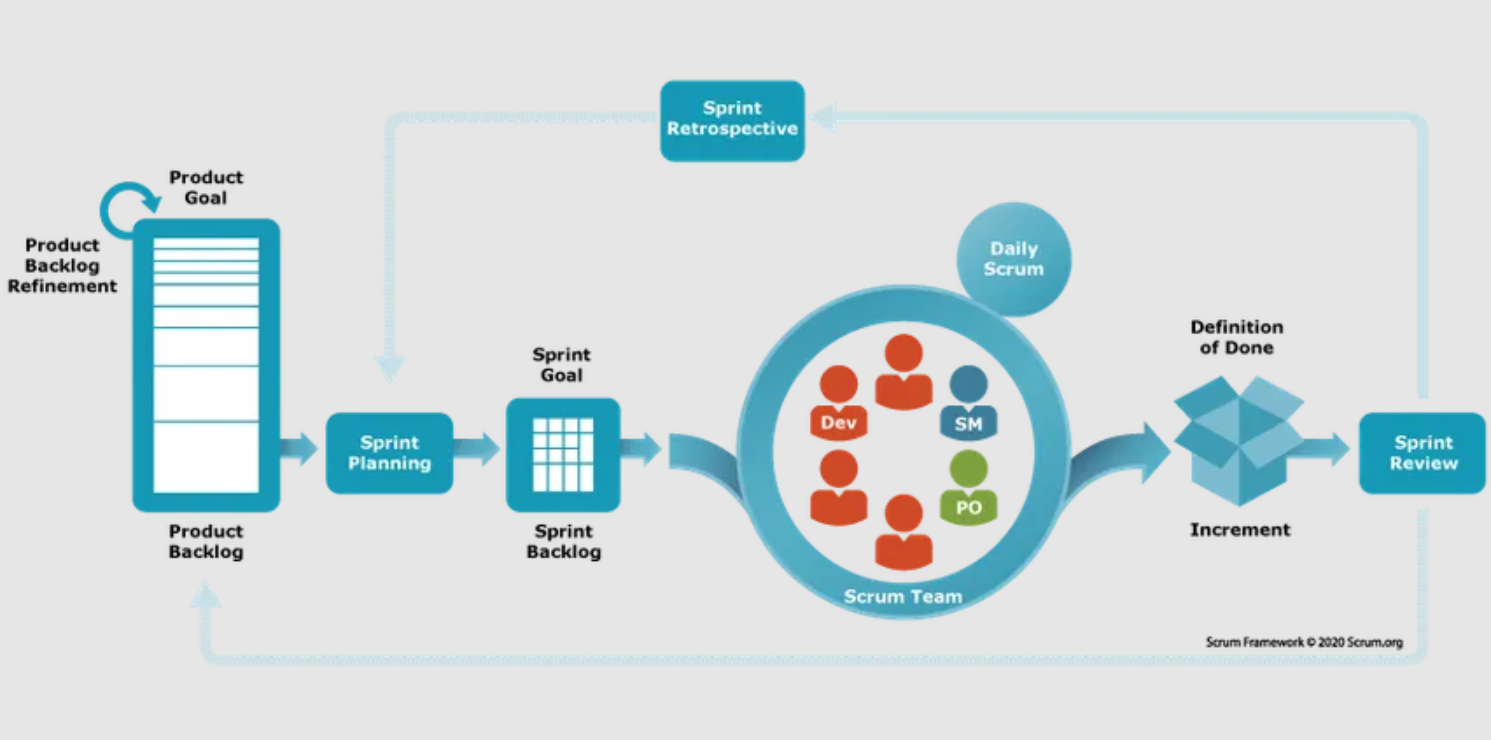
Scrum is an agile framework that is great for breaking down complex projects into smaller digestable chunks. These chunks are generally referred to as an
Increment. These increments are the way Scrum measures progress and moves forward. These increments involve lots of planning and work by the entire scrum team. The increments consist of many moving parts from a scrum team, project owner, user stories, ceramonies, stakeholders and more.

Agile is an apporach to project or product development that empthazises on flexability, collaboration, rapid delivery and continuoues emplyment. For example
being able to change course during a project rather than build first then deploy which is great for reducing risk.
Individuals and interactions over processes and tools
Working software over comprehensive documentation
Customer collaboration over contract negotiation
Responding to change over following a plan
While there is value in the items on the right, we value the items on the left more.
A scrum contains 3 main players -
A product backlog at its core is an ordered list of features/tasks/bugs filtered by most important. We will cover exactly what is included later. But it’s essentially an intricate todo list overseen by the product owner.
A user story is described as a card. This can be digital as seen on a kanban board or a physical card on a white board. User stories consist of many parts. User stories use Acceptance Criteria which uses the format As a (type of user), i want (goal) so that (reason). User stories can be grouped into an epic, which is a group of user stories that may relate closely to each other.
Writing a good user can be fairly complex, however a good method to follow is the INVEST method.
The three c’s is a technique of writing good user stories.
The gherkin method is a way of structuring a user story, similar to psuedo code. Sometimes an additional card alongside base user story. For example: Scenario - Login with valid credentials.
You can then branch this out to what happens if user credentials are wrong, or if userlogs in with google etc.
User stories need to be estimable and prioritized. Generally the priority lies with how much business value they bring. We also look at dependencies, do any other user stories rely on this user story being completed.
Planning poker is a method of analysing what people think the difficulty of a task is. Team members are handed cards with numbers of 1-5 on. They then annonymously put their numbers into a stack and get an average and talk about the level of effort of a task.
Definition of Done and Definition of Read are two important aspects regarding a sprint and user stories. Each has their own definition of done. In terms of a user story it relates to the acceptance criteria and in terms of the sprint it can be different for each scrum team however it generally relates to how and when we know the sprint is done, for example - Every task under user story has been completed and any work created is attached to the user sotry so the product owner can review it.
A sprint is the core of scrum. It’s where all the work is planned, completed and reviewed. Generally whenever people meet and discuess the project is referred to as a ceramony.
First stage is planning - What user stories are we working on, whos working on what and how long do we expect this sprint to take? Create a sprint backlog of user stories from the product backlog.
The scrum team will meet daily to discuess blockers, progress, what they are doing today and bring up any concerns, this allows for a very iterative development.
The increment happens once the product is deemed finished by the scrum team and if it the sprint meets the definition of done so we can review and move onto the next increment.
A informal meeting where we gather information from stakeholder feedback, update the backlog, identify next steps, encourage open communication, generally the whole team is in this ceramony where all stakeholders are encouraged to join.
An informal gathering of the team where the team discusses the processes, how everyone feels, are people getting burnt out? Thinking back over the most recent sprint and see patterns in work e.g. did more work happen at the start then fall off, why? Decide what to do next and aim to relax as a team, maybe plan to go out for lunch.
Subscribe to this blog via RSS.
Blog 2
.net 4
Wpf 3
Blog (2) .net (4) Developer (1) Dev diary (3) Wpf (3) Twitchdash app (3)